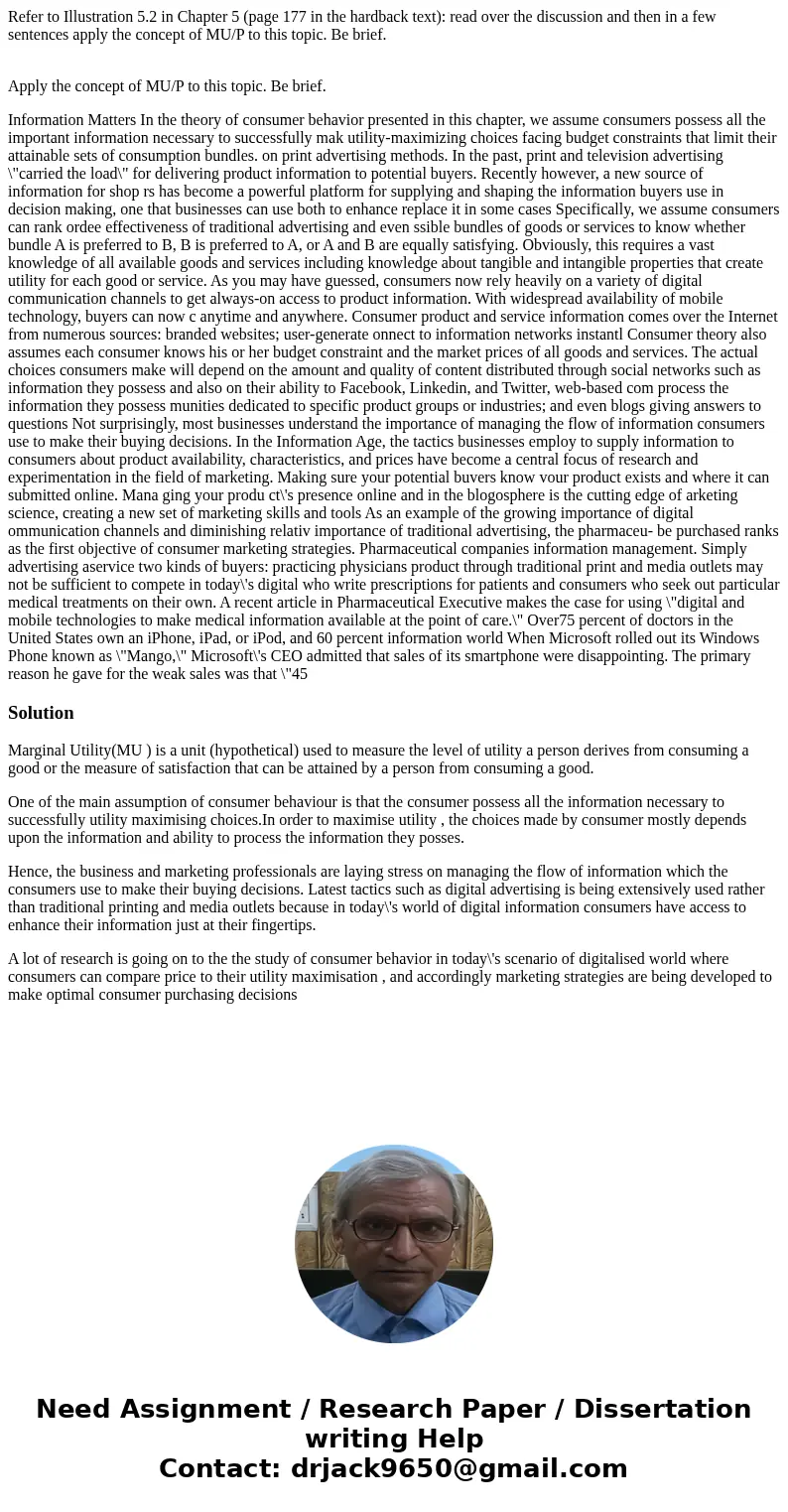Refer to Illustration 5.2 in Chapter 5 (page 177 in the hardback text): read over the discussion and then in a few sentences apply the concept of MU/P to this topic. Be brief.
Apply the concept of MU/P to this topic. Be brief.
Information Matters In the theory of consumer behavior presented in this chapter, we assume consumers possess all the important information necessary to successfully mak utility-maximizing choices facing budget constraints that limit their attainable sets of consumption bundles. on print advertising methods. In the past, print and television advertising \"carried the load\" for delivering product information to potential buyers. Recently however, a new source of information for shop rs has become a powerful platform for supplying and shaping the information buyers use in decision making, one that businesses can use both to enhance replace it in some cases Specifically, we assume consumers can rank ordee effectiveness of traditional advertising and even ssible bundles of goods or services to know whether bundle A is preferred to B, B is preferred to A, or A and B are equally satisfying. Obviously, this requires a vast knowledge of all available goods and services including knowledge about tangible and intangible properties that create utility for each good or service. As you may have guessed, consumers now rely heavily on a variety of digital communication channels to get always-on access to product information. With widespread availability of mobile technology, buyers can now c anytime and anywhere. Consumer product and service information comes over the Internet from numerous sources: branded websites; user-generate onnect to information networks instantl Consumer theory also assumes each consumer knows his or her budget constraint and the market prices of all goods and services. The actual choices consumers make will depend on the amount and quality of content distributed through social networks such as information they possess and also on their ability to Facebook, Linkedin, and Twitter, web-based com process the information they possess munities dedicated to specific product groups or industries; and even blogs giving answers to questions Not surprisingly, most businesses understand the importance of managing the flow of information consumers use to make their buying decisions. In the Information Age, the tactics businesses employ to supply information to consumers about product availability, characteristics, and prices have become a central focus of research and experimentation in the field of marketing. Making sure your potential buvers know vour product exists and where it can submitted online. Mana ging your produ ct\'s presence online and in the blogosphere is the cutting edge of arketing science, creating a new set of marketing skills and tools As an example of the growing importance of digital ommunication channels and diminishing relativ importance of traditional advertising, the pharmaceu- be purchased ranks as the first objective of consumer marketing strategies. Pharmaceutical companies information management. Simply advertising aservice two kinds of buyers: practicing physicians product through traditional print and media outlets may not be sufficient to compete in today\'s digital who write prescriptions for patients and consumers who seek out particular medical treatments on their own. A recent article in Pharmaceutical Executive makes the case for using \"digital and mobile technologies to make medical information available at the point of care.\" Over75 percent of doctors in the United States own an iPhone, iPad, or iPod, and 60 percent information world When Microsoft rolled out its Windows Phone known as \"Mango,\" Microsoft\'s CEO admitted that sales of its smartphone were disappointing. The primary reason he gave for the weak sales was that \"45
Marginal Utility(MU ) is a unit (hypothetical) used to measure the level of utility a person derives from consuming a good or the measure of satisfaction that can be attained by a person from consuming a good.
One of the main assumption of consumer behaviour is that the consumer possess all the information necessary to successfully utility maximising choices.In order to maximise utility , the choices made by consumer mostly depends upon the information and ability to process the information they posses.
Hence, the business and marketing professionals are laying stress on managing the flow of information which the consumers use to make their buying decisions. Latest tactics such as digital advertising is being extensively used rather than traditional printing and media outlets because in today\'s world of digital information consumers have access to enhance their information just at their fingertips.
A lot of research is going on to the the study of consumer behavior in today\'s scenario of digitalised world where consumers can compare price to their utility maximisation , and accordingly marketing strategies are being developed to make optimal consumer purchasing decisions

 Homework Sourse
Homework Sourse